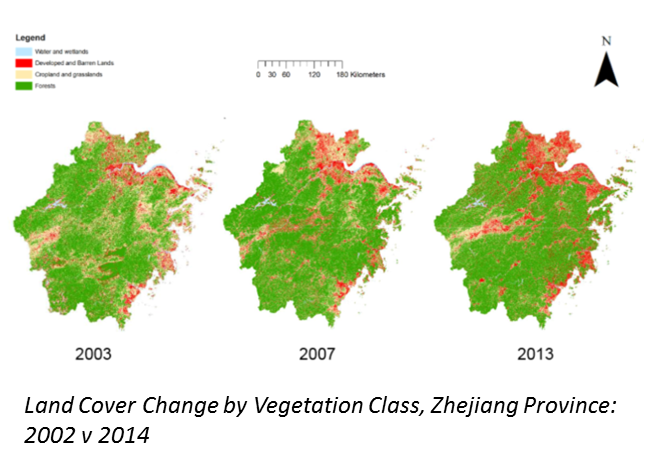Land-Use Changes in China: Implications for Regional Carbon Balances


2013-2015
Linda Powers Tomasso looked at land use change in Zhejiang Province over the last twelve years to gauge its impact to carbon sequestration in terrestrial biomass. Developing a series of land use maps, Tomasso illustrates the intensification of forested land cover across the decade 2003-2013, even as urban areas have grown along the Yangtze River Delta to the north and along the southeastern coast of Zhejiang Province. The Chinese Central Government’s aggressive program of afforestation and reforestation that began in the late 1980s has yielded tremendous environmental benefits by increasing terrestrial biomass as forests begin to reach maturity.
A preliminary conclusion of this research indicates the potential that China’s forest systems hold for atmospheric carbon storage and long-term sequestration to balance China’s spiking fossil fuel emissions. A caveat, however, is that as forests mature, absolute rates of carbon capture decline and are unable to keep pace with rampant rates of emissions growth. Tomasso’s research highlights the importance of prioritizing forestlands and biomass retention to accurately reflect the accounting of China’s regional carbon budgets.
Click here to watch a recording of a webinar presentation by Powers Tomasso on this research.




